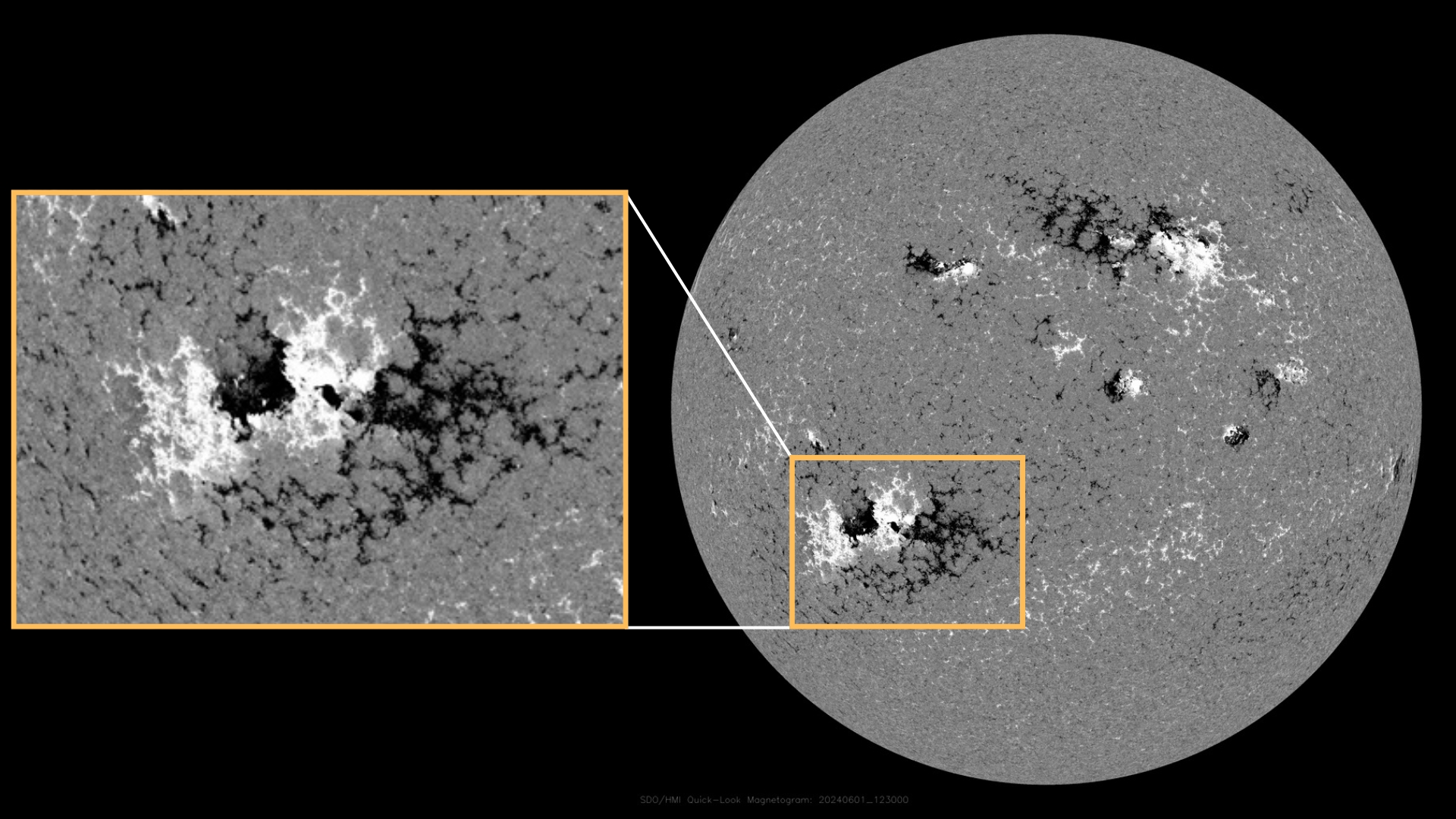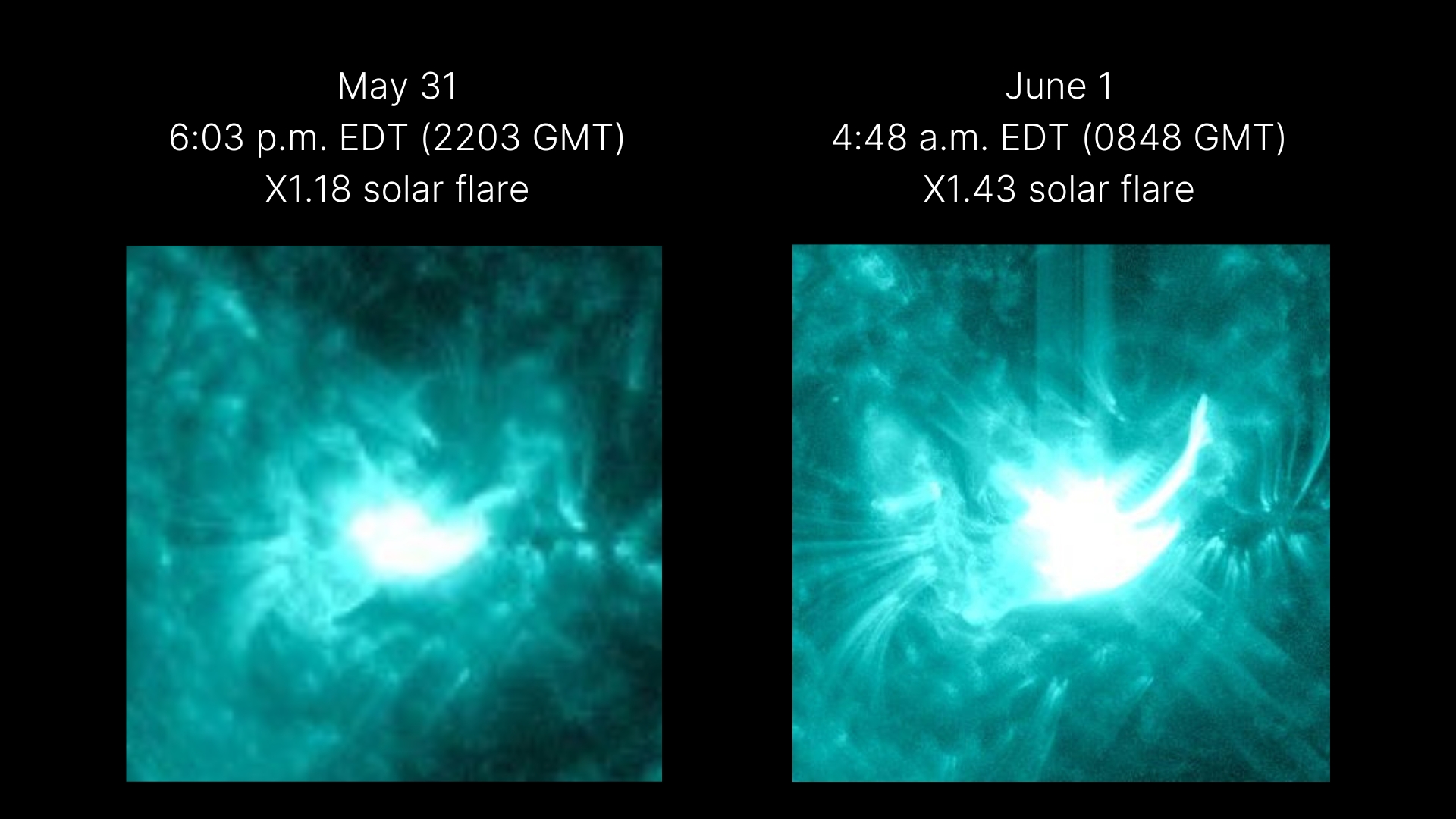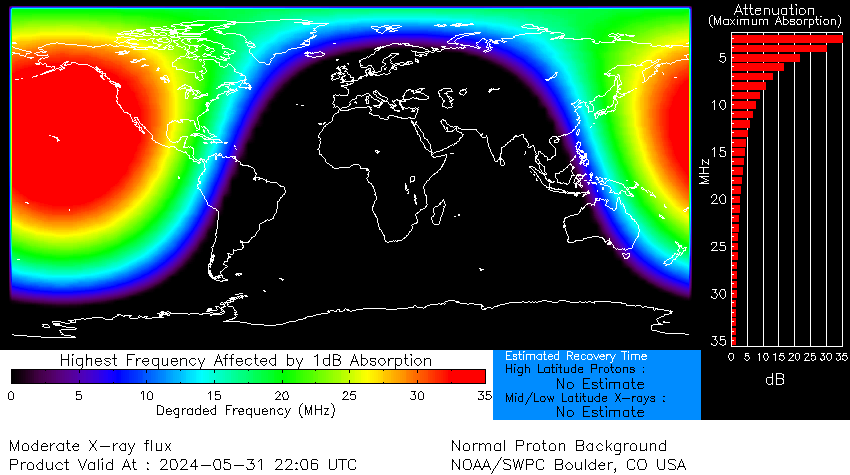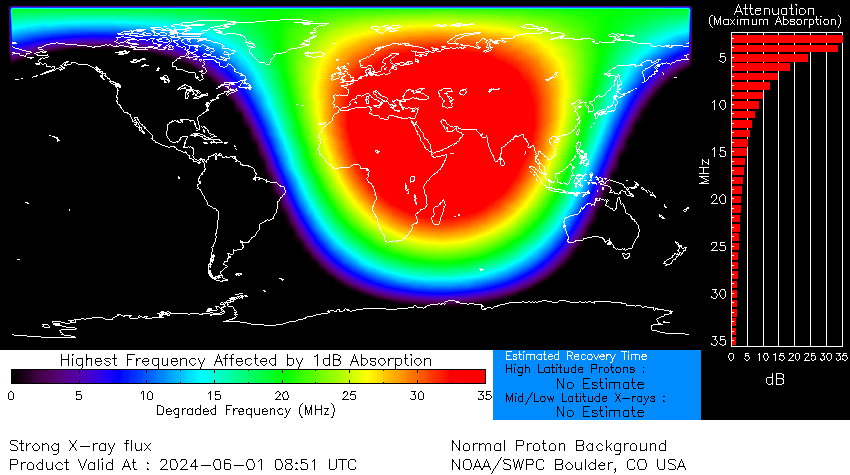Double trouble: Sun unleashes 2 powerful X-class solar flares in 12 hours (video)
The two flares originated from the historic sunspot responsible for May's stunning auroras.
The hyperactive sunspot region responsible for May's incredible auroras has done it again, firing off not one but two X-class solar flares in less than 12 hours.
The first X-class solar flare peaked at 6:03 p.m. EDT (2203GMT) on Friday (May 31), and the second did so at 4:48 a.m. EDT (0848 GMT) today (June 1).
Solar flares are powerful bursts of electromagnetic radiation that blast from the surface of the sun. They're categorized by strength into lettered groups, with X-class being the most powerful. Within each class, numbers from 1-10 (and beyond for X-class flares) describe a flare's relative strength. Friday's and today's big flares clocked in at X1.18 and X1.43, respectively, according to spaceweatherlive.com.
The decaying sunspot region AR3664's magnetically complex core provides the perfect conditions to create powerful explosions. This is because, at the heart of AR3664, two oppositely signed magnetic poles are cramped together. This is visible in the image below from NASA's Solar Dynamics Observatory Magnetogram, in which white represents north magnetic polarity and black represents south magnetic polarity.

When oppositely directed magnetic field lines in the sun's plasma break and rejoin, a process known as magnetic reconnection, the magnetic field energy is converted into plasma kinetic and thermal energy, which can result in powerful eruptions from the solar surface — in this case, the two recent X-class solar flares.

Radio blackouts were observed across the sunlit portion of Earth during the time of both solar flare eruptions, the first over the Western U.S. and the Pacific and the second over Europe, Africa and Asia.
Get the Space.com Newsletter
Breaking space news, the latest updates on rocket launches, skywatching events and more!


Shortwave radio blackouts, like these, are common occurrences after powerful solar flare eruptions due to strong pulses of X-rays and extreme ultraviolet radiation emission. The radiation travels toward Earth at the speed of light and ionizes (gives an electrical charge to) the top of Earth's atmosphere when it reaches us.
This ionization causes a higher-density environment for high-frequency shortwave radio signals to navigate through in order to support communication over long distances. Radio waves that interact with electrons in the ionized layers lose energy due to more frequent collisions, and this can lead to radio signals becoming degraded or completely absorbed.
Join our Space Forums to keep talking space on the latest missions, night sky and more! And if you have a news tip, correction or comment, let us know at: community@space.com.

Daisy Dobrijevic joined Space.com in February 2022 having previously worked for our sister publication All About Space magazine as a staff writer. Before joining us, Daisy completed an editorial internship with the BBC Sky at Night Magazine and worked at the National Space Centre in Leicester, U.K., where she enjoyed communicating space science to the public. In 2021, Daisy completed a PhD in plant physiology and also holds a Master's in Environmental Science, she is currently based in Nottingham, U.K. Daisy is passionate about all things space, with a penchant for solar activity and space weather. She has a strong interest in astrotourism and loves nothing more than a good northern lights chase!









